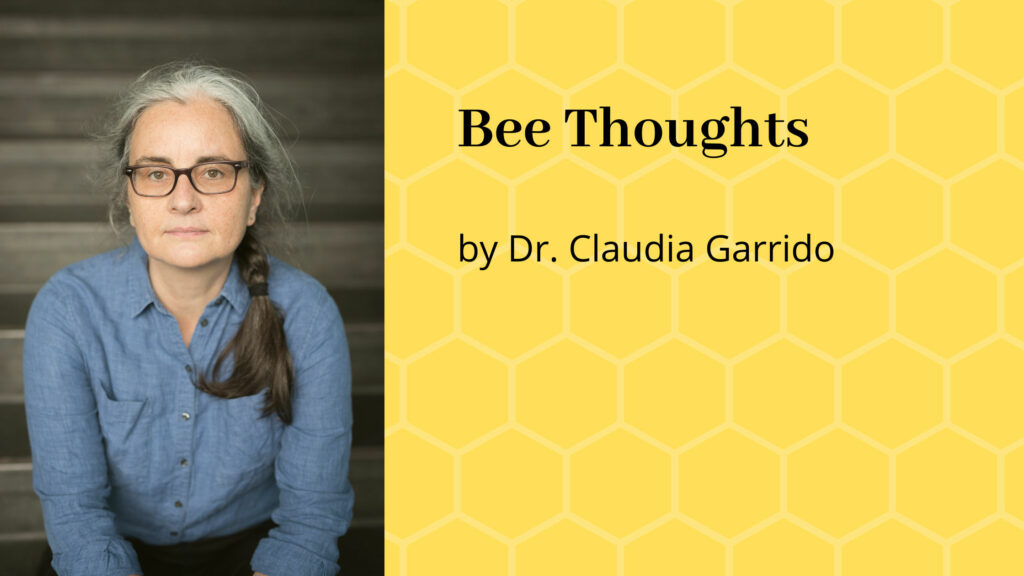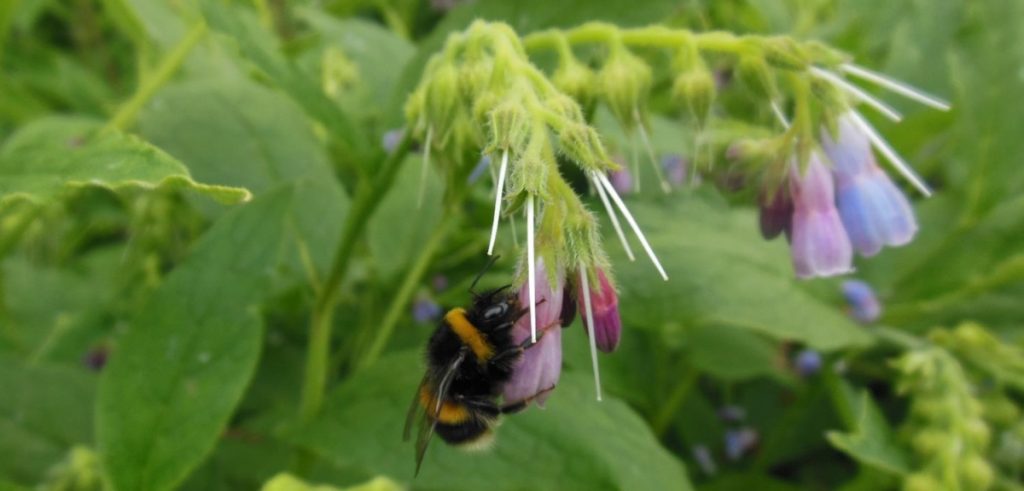Let me get that immediately out of the way: I’m not a fan of varroa resistance breeding. And this though (or even because?) I managed a breeding program, years ago. I wouldn’t mention it – if it weren’t for two things:
- In Australia, with the change of strategy from eradication to management of the varroa mite, there are now also attempts to “breed resistant stock” of honey bees. I think in a situation like in Australia this is wrong if not dangerous. More on that later.
- I’m getting posts from an initiative with “varroa free in 2033” in its name almost every day. It was founded last year, so the promise is to “solve the problem” in 10 years. I’ve been hearing that since I began working on varroa (in 1998…). So, you may understand that I’m a bit suspicious when I hear something like that.
However, let me give you some reasons why I think that varroa resistance breeding doesn’t save you from treating.
Varroa is a “new” parasite
I know, I know, it’s already almost 50 years that Varroa destructor began to spread around the world. But that’s not very much in evolutionary terms. Less than the blink of an eye. Selection programs “speed up” evolution. But for this, it needs two things: The trait you’re selecting for has a phenotypic expression and it’s genetically fixed. “Phenotype” means the expression of a trait. My dark hair with white strands is part of my phenotype. This applies also to physiological traits. The resistance against varroa treatments I explained two weeks ago is a phenotypical trait.
But here comes the important part: These traits are only successful if they’re hereditable. I.e. there’s genetic information behind this. In case of resistance against varroa treatments I explained that this is easier if a single gene has to be changed to change the target protein of the treatment. It’s kind of similar in this case. Varroa mites affect multiple organs and physiological systems. We know that they feed primarily on the fat body of the bees. This organ is involved in winter survival, immune responses, etc. Workers who develop with varroa in their brood cell hatch with lower body weight and are more short-lived than their unparasitized sisters. Drones have less sperm and aren’t as able flyers as healthy drones. The amount of traits makes clear the amount of genes that may be involved in all this.
My story with varroa resistance breeding
Let me tell you about my experience in the varroa resistance breeding world. I worked in a breeding project for four years. It was a big project here in Germany, financed by the Ministry of Agriculture. There were more than 100 beekeepers all over the country participating in this program. They needed at least 10 colonies enrolled in the project. They had to look for two traits: varroa infestation development and hygienic behaviour.
This choice was completely arbitrary, just from the many traits one could have looked at. There are differences between colonies in both of them. So, the idea was to look for those colonies who had the weakest infestation increase over the year and the highest hygienic behaviour. These traits can be observed by the beekeeper without major difficulties. But they’re very different.
The development of the infestation is a trait that depends on many factors, too. The egg laying rate of the queen, for instance. Varroa mites reproduce in the sealed brood, so the amount of eggs a queen lays determines how many opportunities they have to do so. The floral resources also influence the amount of brood. If there’s a nutritional shortage, the workers won’t raise the brood. How many flowers bloom depends partly on the weather.
Heritability of varroa resistance traits
I’m telling you all this to make clear that even a “single” trait has multiple aspects to consider. And that there’s a huge – HUGE! – influence of the environment on the expression of traits. Not all of the infestation development depends on the bees. We totally left out the parasite itself: Not all varroa mites will be equally fertile, they may have diseases themselves, etc. The more complex the trait, the larger the proportion of environmental influence usually is.
So, the infestation development is a quite uncertain trait to select for. Because the differences we see between the colonies don’t have a high heritability. I don’t have my notes from the time in that job anymore (moved house too often in my life…), but I remember something like 4%. That was calculated by the data in this project. So, 4% is a “genetic program”, the rest – 96%! – is influenced by the environment.
How science works…
So, is varroa resistance breeding just nonsense? I don’t know. In fact, advancement in science often happened because of “crazy” ideas. New things often created heated discussions, were contradicted as nonsense. That’s how science works, it’s not about absolute truth, it’s about observations and verifying them. Having data and analysing them with proper statistics and intellectual honesty. The system of calculating the heredity in this project got criticism of lacking consistency by one of the most important animal breeding experts in Germany.
The colleague who did the whole “heritability estimate” thing was very keen of hygienic behaviour and wanted to limit the whole selection on that. Which lacks that intellectual honesty I was talking about before. He brought me to change my presentation in one of the meetings with scientific board of the project. This consisted of different people, a kind of “peer review” of external scientists. Well, I presented a diagram showing the interactions in biological systems like a parasite-host relationship and environmental influences. Also saying that “I didn’t expect to have to explain the basics in this context”.
Needless to say that my relationship with that colleague wasn’t the best after that. I would handle it differently nowadays (perhaps). However, maybe what disturbs me the most about this whole varroa resistance breeding thing: It’s more a belief system. The data, in my opinion, are scarce and could be interpreted differently very easily.
Some practical considerations
Maybe my general attitude to varroa resistance breeding is influenced by this story I have with it. If I’m proven wrong – by data, not only beliefs – I’ll be more than happy to say that I was wrong. I can’t say it’s impossible. I actually got that job because of my experience with “resistant” bees: Africanized honey bees in Brasil and the original host, Apis cerana, in Thailand. But again, successful breeding will depend on the genetic foundation of the traits we’re selecting for. And if they really influence the “resistance”.
In addition, there are a few practical considerations to make, too. The number of beekeepers all over the world is increasing and almost all of them have to deal with varroa. So, we’d have to distribute these resistant bees to all beekeepers. Logistical difficulties aside: This would reduce the genetic diversity in this managed animal, Apis mellifera. That’s generally not the best way to maintain health.
The more important thing, in my opinion however, is that those already existing resistant bees lost their resistance when they were brought outside of the region they lived in. Which confirms the huge influence of environmental factors.
We also have to be honest enough to say that we don’t really know what the factors are that make these resistant bees resistant. So what traits do we select for? For instance, it was long believed that Africanized bees in Brasil were resistant to because of the lower reproduction in worker brood. Well, it was yours truly to contradict that. When I called my PhD supervisor to tell him my results in Brasil, he said “impossible, look again”. But he then had to admit that things had changed but Africanised bees still were fine with varroa. Intellectual honesty, remember?
Ecological impact
In a LinkedIn post I talked about a few more criticism I have in this context. My posts are always public, so you don’t need an account to read them. Here, I want to point out only one last thing: The ecological impact of varroa. We know that varroa mites transmit viruses, especially DWV – which causes that typical deformed wings when the varroa infestation is high. These viruses aren’t very specific, i.e. they aren’t limited to honey bees. They’re spreading over to other bee species (and many other insects). Which impacts overall bee health – something I care a lot about.
This is also why I was so shocked after hearing Tom Seeley’s talk at Apimondia 2019 in Montreal. He presented “Darwinian beekeeping” and beekeepers were really enthusiastic. To me that sounds like pure nonsense and even dangerous. Just because of this ecological impact that viruses (and other diseases) spread over different species. In addition, honey bees aren’t native to the Americas or Australia. So this is why I’m not very happy about hearing about the attempts of breeding for “resistant stock” in Australia.
Australia is one of the diversity hotspots for bees in the world. Honey bees don’t belong there, it’s a managed animal which has build up also a feral population. This already has an ecological impact that’s very discussed there. Now add the faster transmission of diseases because of varroa.
Conclusion?
Actually, increased resistance against viruses seems to be a factor for “varroa resistance”. So, what trait do we select for in this context? It seems so arrogant to me to make promises that we don’t know if we can keep them. And it’s this type of arrogance that brought us to the point we are now. Including biodiversity loss and climate crisis.
I’d have much more to rant about, but I think this is enough for this time. Also treatments won’t “solve the problem” like beekeepers would like it. And me too, to be honest. Varroa is here to stay, we can only control it, not eradicate it. With that, we’ll at least limit the damage we caused.
In the discussion below that LinkedIn post, Raffaele dall’Olio said that he considered varroa resistance breeding as part of an integrated control of varroa mites. That sounds intellectually honest to me. Not promising “the solution”. There are also others, more positive than me, who say that we have to understand better the mechanism behind resistance to breed for it. Oh yes, definitely. Prove me wrong guys. I’ll be happy to admit that.



